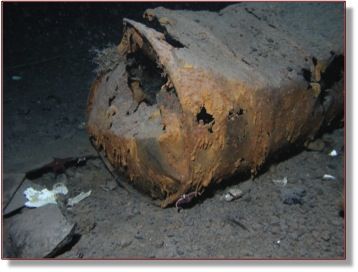Why Am I Going to Antarctica?
Although it is exciting to be going to Antarctica in less than two weeks, it is even more exciting to be part of important research there. I will be working on a poorly understood and unexpected reality of the world’s only uninhabited continent: the mounting toll of human activity on the continent. Starting with Robert F. Scott, humans have spent time on Ross Island for over a century. As those visits add up and accelerate, there is an inevitable impact. In fact, McMurdo Station is a serious source of localized pollution.

Before environmental protocols were enacted in the 1990s, sewage from McMurdo Station flowed directly into the bay, trash was stored in open-air landfills, and oil drums were left to settle at the bottom of the seafloor. In 1991 countries from across the globe agreed to protect Antarctica by signing the The Protocol on Environmental Protection to the Antarctic Treaty, also known as the Madrid Protocol. The protocol sets rules to ensure humans respect the environment by disposing of waste properly, protecting wildlife by not interfering with flora or fauna and preserving the land or seafloor by not polluting. It also requires countries to monitor their activities to ensure that humans are not further damaging the environment.


That's where my team comes in. For 15 years now, my research team has visited McMurdo Station (or sometimes Palmer Station) to collect sediment from the land and seafloor. Andrew Klein, the team leader and Geographic Information System (GIS) expert, uses a computer program to generate randomly chosen sampling sites. These are mapped out and entered into a Global Positioning System (GPSA Global Positioning System (GPS) is a satellite-based navigation system used to track the location or position of objects on the Earth’s surface.) which we use to bring us to the site. On land this is usually straight forward--when we are at the correct location, we collect sediment from the spot by scooping it into a labeled jar. We also collect sediment samples from the seafloor, which require a lot more preparation. Once the location is found on the sea ice, we drill a hole through the thick ice, drag a dive hut over it and are ready to send divers in to collect samples. Check out the video of this process below--it's pretty interesting! Terry Palmer, the benthic ecologist on the team, dives down to the seafloor with another diver and collects sediments. The sediments from the land and seafloor are shipped back to Texas A&M, where Stephen Sweet, the geochemist in the group, leads the process of analyzing them for pollutants like hydrocarbons and trace metals.
There is a lot more that goes into getting this work done, which I will be sure to discuss throughout my expedition.
In the Schools and in the News!
It's been busy here in State College--I've been visiting lots of classrooms to talk about the work I'll be doing and share fun activities like Blubber Gloves and ECW(abbreviation) Extreme Cold Weather clothing Gear (see my last journal[https://www.polartrec.com/expeditions/human-impacts-in-antarctica-2015/journals/2015-10-07] to learn more). On Thursday a local film crew visited my presentation at a local elementary school. You can watch a video of the news clip here.

Here are some of the other places I've visited to talk about Antarctica since my last post:








Comments